 |
Why Mars? What makes the Red Planet so special?
What, indeed, makes it red? We answer your questions... |
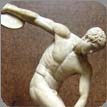 |
Q: When was Mars first discovered?
Helen Jackman, 27, East London
A: We’ve actually been aware of the fourth planet in our solar system since prehistoric times but it was the Romans who gave it the name by which we all know it – Mars. They named it after their God of War! Sounds ominous, doesn’t it? |
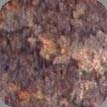 |
Q: Why is it red?
Peter Ellis, 46, Birmingham
A: What makes the surface of Mars so red? Is it Wells’ terrifying Martian red weed? The scars of a centuries-old comet? The blood of an ancient civilisation? Nope. It’s simply iron oxide. Good old rust! |
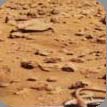 |
Q: What is areology?
Samir Ahmed, 17, Hull
A: A popular question! Areology is, in fact, the study of Mars. Ares was the Greek name for Mars, the Roman God of War. The first aerographers were Johann Heinrich Mädler and Wilhelm Beer. Many years ago, in 1840, Mädler drew the first ever map of Mars. Here’s hoping that the latest aerographers, Professor Llewellyn and his dedicated team, can manage a bit more that that! |
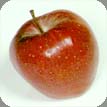 |
Q: If Earth were an apple, then what fruit would Mars be?
Margaret Hoffman, 67, North London
A: A smaller, dried-out apple. Or, a different fruit entirely. Unlike the gigantic Jupiter or sizeable Saturn, Mars has a quarter the surface area of Earth and only one-tenth the mass which means it’s about half the size of our world and twice the size of our moon. The land area of Mars and Earth are roughly the same, though, as Mars has no oceans whereas 71% of the Earth’s surface is water. |
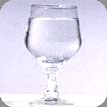 |
Q: Is there water on Mars?
Richard Darlington, 34, Glasgow
A: Read the answer to the last question! Only joking, Richard. Actually, there is water on Mars. Frozen water (commonly known as ice) can be found at the polar ice caps.
|
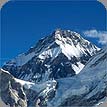 |
Q: Is it true that there’s a mountain higher than Mount Everest on Mars?
Ian Sowersby, 12, Bradford
A: Top of the class, Ian! Olympus Mons is, at 26 kilometres, the tallest mountain in our solar system. Also, the Mariner Valley, at 4,000 kilometres long and seven kilometres deep, is the solar system’s largest canyon system. The distance between the deepest crater and highest mountain on Mars is nearly 31 kilometres. On Earth, the difference between our highest and lowest points is a mere 19 kilometres! It’s a fascinating planet, isn’t it? |
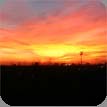 |
Q: How long is a Martian day?
Maureen Barlow, 42, Folkestone
A: Nearly the same as Earth’s, Maureen. Mars takes just over 24 hours to spin on its axis. However, a Martian year lasts a colossal 687 days! |
 |
Q: My husband told me that I’d weigh a lot less on Mars. Is that true?
Pauline Dawes, 37, Chelmsford
A: Your husband is right (if not very tactful!). On Mars, you’d only weigh a third as much as you do in Chelmsford! |
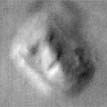 |
Q: Did I once hear something about a face on Mars?
Sharon McDonagh, 21, Dublin
A: Indeed you might have, Sharon. In 1976, the Viking Orbiter photographed a hill, in the Cydonia region, which seemed to resemble a gigantic, reptilian alien face. Some people have argued that the face must be man-made (or indeed Martian-made) although NASA claims that it’s all just a trick of the light. Why not make up your own mind? |
|
 |
DID YOU KNOW...?
DOUBLE TROUBLE!
 Mars has two moons, Phobos and Deimos. These were discovered in 1877 by Asaph Hall and are named after characters in Greek mythology. Phobos means panic or fear and Deimos means terror or dread!
Mars has two moons, Phobos and Deimos. These were discovered in 1877 by Asaph Hall and are named after characters in Greek mythology. Phobos means panic or fear and Deimos means terror or dread!
NIGHTCLUB!
 The surface of Mars gets so cold in the winter that nearly 25 % of the entire atmosphere condenses into CO2, more commonly known as dry ice!
The surface of Mars gets so cold in the winter that nearly 25 % of the entire atmosphere condenses into CO2, more commonly known as dry ice!
SLAM DUNK DA FUNK!
 Because it has much less gravity than Earth, it’s likely that just about anyone could dunk a basketball on Mars. However, the spacesuit you’d have to wear might just slow you down!
Because it has much less gravity than Earth, it’s likely that just about anyone could dunk a basketball on Mars. However, the spacesuit you’d have to wear might just slow you down!
WHALE OF A TIME!
 The mass of Mars is equivalent to 4,700,000,000,000,000,000 blue whales.#
The mass of Mars is equivalent to 4,700,000,000,000,000,000 blue whales.#
THE CURSE OF MARS!
 Two-thirds of all Mars-bound spacecraft have failed before completing their mission. So many missions have had inexplicable communication problems that people have likened the area between the planets to the Bermuda Triangle!
Two-thirds of all Mars-bound spacecraft have failed before completing their mission. So many missions have had inexplicable communication problems that people have likened the area between the planets to the Bermuda Triangle!
|
 |


 Mars has two moons, Phobos and Deimos. These were discovered in 1877 by Asaph Hall and are named after characters in Greek mythology. Phobos means panic or fear and Deimos means terror or dread!
Mars has two moons, Phobos and Deimos. These were discovered in 1877 by Asaph Hall and are named after characters in Greek mythology. Phobos means panic or fear and Deimos means terror or dread!
 The surface of Mars gets so cold in the winter that nearly 25 % of the entire atmosphere condenses into CO2, more commonly known as dry ice!
The surface of Mars gets so cold in the winter that nearly 25 % of the entire atmosphere condenses into CO2, more commonly known as dry ice!
 Because it has much less gravity than Earth, it’s likely that just about anyone could dunk a basketball on Mars. However, the spacesuit you’d have to wear might just slow you down!
Because it has much less gravity than Earth, it’s likely that just about anyone could dunk a basketball on Mars. However, the spacesuit you’d have to wear might just slow you down!
 The mass of Mars is equivalent to 4,700,000,000,000,000,000 blue whales.#
The mass of Mars is equivalent to 4,700,000,000,000,000,000 blue whales.#
 Two-thirds of all Mars-bound spacecraft have failed before completing their mission. So many missions have had inexplicable communication problems that people have likened the area between the planets to the Bermuda Triangle!
Two-thirds of all Mars-bound spacecraft have failed before completing their mission. So many missions have had inexplicable communication problems that people have likened the area between the planets to the Bermuda Triangle!








